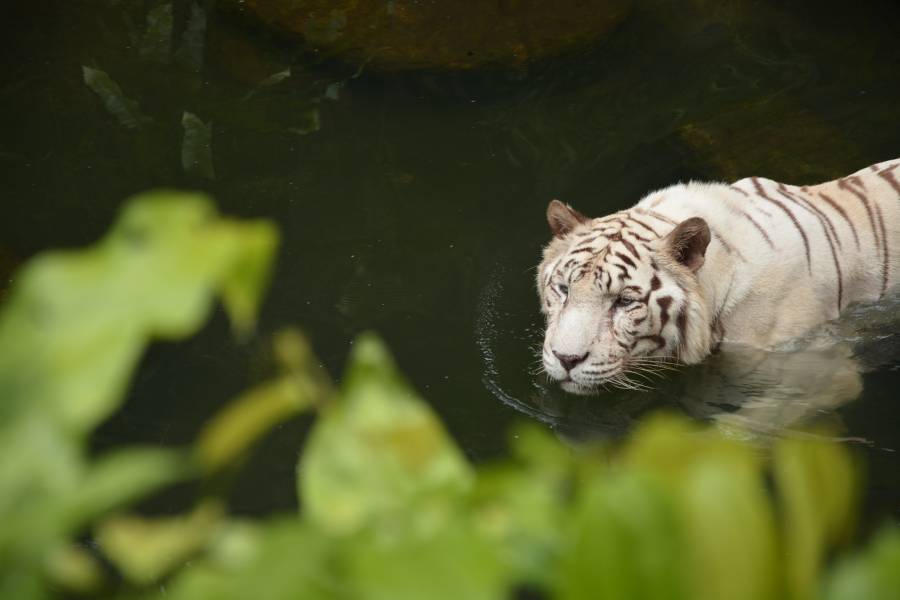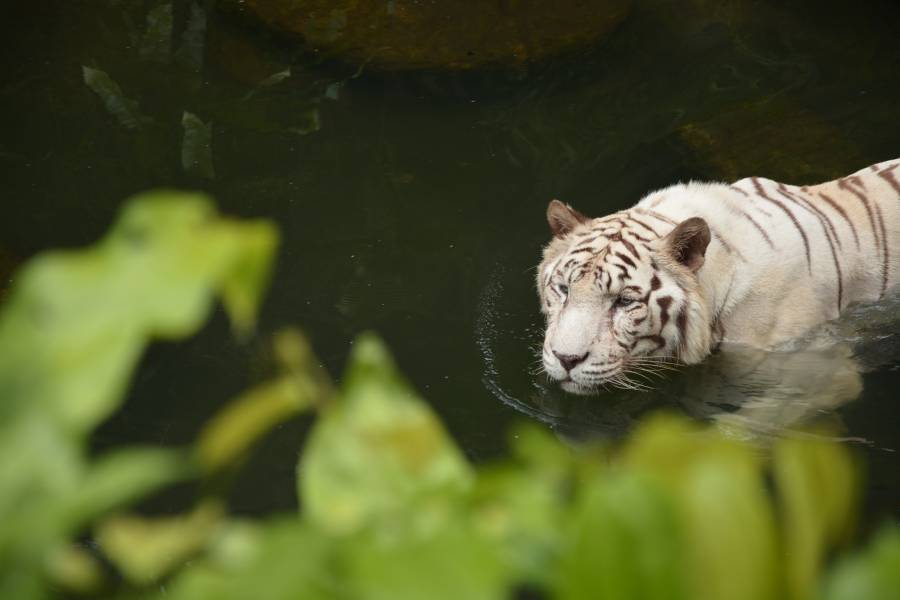How fast can tigers swim?
The tiger is one of the most giant cats and can weigh between 220 and 660 pounds (99-299kg) depending on the subspecies.
It’s a well-known but often surprising fact that tigers are excellent swimmers and typically spend around half an hour in water every day. They can swim 4 miles per hour and move at slower speeds over longer distances.
Tigers like to swim because it cools them down and they can keep hidden in the water if they catch a glimpse of prey. They are also known to kill the game by dragging them into the water to avoid blood staining their fur.
Even though swimming comes naturally to tigers, some subspecies are better at it than others.
- The Siberian Tiger is a powerful swimmer and has webbed paws.
- The Bengal Tiger is a strong swimmer, but it’s typically less of a fan of the water than the Siberian Tiger.
- The Malayan Tiger is likely to avoid swimming in favor of taking cover in the trees.
- What about the Sumatran Tiger. He’s known to be a good swimmer and climber but typically prefers climbing when faced with water.
Can tigers swim underwater?
Some people even claim that tigers can swim underwater to catch fish. Tigers sometimes wade into water bodies for fishing. In most cases, they walk with heads held high or while submerging heads entirely underwater.
How far can a tiger swim?

This question is not as easy to answer as you may think. Even though tigers are often referred to as “the swimming cats,” there hasn’t been much research on their aquatic abilities, mainly how far they can swim, where they go, and why.
Any tiger researcher knows that tigers can and do swim across rivers and watercourses, but how far and where they go is still a mystery.
One known thing is that the tiger’s main prey species, ungulates, can swim across rivers and stay within habitats on the opposite bank, so tigers must be able to do the same.
This means tigers may have evolved for a riparian existence to follow their prey or at least be able to withstand temporary flooding associated with seasonal rises in river levels.
If we look at the tiger’s morphology, we find that they are very well adapted to walking and running in the forest.
Their paws are large with protective hard pads and long retractable claws (for climbing trees), their shoulder blades are like ‘ball-and-socket joints allowing for greater freedom of movement in the shoulder and elbow.
These anatomical adaptations suggest that tigers are well built to withstand the rigors of locomotion in a forested environment where they have to move over, under, and through obstructions such as fallen logs or other large objects. This would be true particularly during hunting, when chasing prey over uneven ground is likely to occur.
Can tigers swim faster than humans?

When it comes to swimming, what can beat both swimming champion Michael Phelps and an Olympic 100 meters freestyle gold medalist? The answer is the tiger.
No wonder why this animal has been respected by various civilizations all around the world since ancient times. Its strength, speed, agility are just a few of its qualities.
Although tigers can’t keep swimming forever because their feline bodies aren’t made to do that, they can swim gracefully and swiftly, even for several kilometers.
Tigers are good swimmers because their bulky body mass is distributed evenly. So it isn’t like a bulldog’s (weighing at least double and quadruple the tiger’s weight) disproportionally heavy head, which would definitely give the body an unbalanced load.
The tiger’s legs are also well adapted to its lifestyle. They can keep moving in water just like on land, using their sharp claws for perfect grip and support. The powerful back legs propel it forward while the smaller front paws make it easier, like a motorboat’s two propellers.
Do tigers love water? Do they like to splash, play and swim?

But nature always amazes us with its mystery! We hear stories about tigers falling into water pools and having to swim. Or finding them in banyan tree branches on islands. And there are actually even tigers that live in swamps!
The answer to the question “Do tigers like water” seems complicated, but it’s even more complex.
Some of the Panthera tigris species love water for them; swimming is natural.
They can swim several kilometers at once and cover long distances in rivers.
People thought tigers could not swim across such a wide river, but this one proved them wrong! It floated from India to Bangladesh and back five times during the year of observation.
A Siberian tiger, called Amur, is considered the most aquatic of all living cat species.
It can swim in icy rivers for many kilometers, dive deep into the water and stay there for a long time searching for prey.
One of the most famous big cats that love water is a white tiger. White tigers found in India, China, and the Soviet Union (Moscow Zoo) often like to take a swim and play around with water. They can spend much time underwater: they dive and swim on the surface, looking for prey.
FAQ:
How do tigers get their jaws around prey underwater?
Tigers are masters at swimming and can survive a long, long time in the water before succumbing to drowning. They usually don’t swallow large prey underwater; they take them on land or ice or into the shallows. Only if the target is tiny (a fawn) might it be eaten in shallow water.
What’s the preferred water depth for a tiger kill?
Tigers prefer to attack prey from land or ice, but they prefer to stalk and ambush if they go into deep water. They will sometimes hunt and ambush from shallow waters, where they launch themselves at the animal’s rump and drag it underwater. Sometimes this is done in very shallow waters, with the tiger walking or running on its hind legs to attack.
Where does a tiger go when it swims?
Tigers hate getting wet and will climb on floating debris to avoid having their bellies wet. They like water, but not enough to go in for a swim unless there is prey available (see above).
Why can’t tigers sustain swimming for long periods?
Tigers are good swimmers but not as good as their cousins, the leopards, and jaguars, which can stay in water for hours or days at a time. Tigers have been recorded swimming up to 12 miles without stopping, but they cannot do this for long periods because they tire very quickly; tigers that went into deep waters never came back to the surface.






